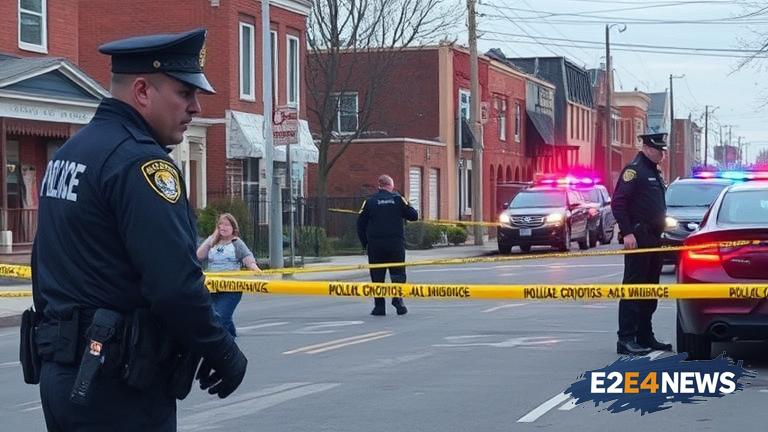A recently released report has provided a detailed account of the events leading up to the fatal shooting of a paranoid man by Windsor police. The incident, which occurred in Windsor, Canada, has raised questions about police protocols and the use of deadly force. According to the report, the man, who was not named, was experiencing a mental health crisis and was acting erratically when police arrived on the scene. Despite efforts to de-escalate the situation, the man became increasingly agitated, leading to a confrontation with police. The report reveals that the man was shot multiple times by police, resulting in his death. The incident has sparked an investigation into the police handling of the situation, with many calling for greater transparency and accountability. The report highlights the complexities of policing and the challenges faced by officers in high-pressure situations. It also underscores the need for improved training and resources to address mental health crises. The incident has had a profound impact on the community, with many expressing shock and sadness at the loss of life. The report’s findings have also raised concerns about the potential for similar incidents in the future, highlighting the need for ongoing review and reform of police protocols. The use of force by police has been a contentious issue in recent years, with many advocating for alternative approaches to de-escalation. The report’s release has sparked a renewed debate about the role of police in society and the need for greater accountability. In response to the report, local authorities have announced plans to review police protocols and provide additional training for officers. The incident has also led to calls for increased funding for mental health services, highlighting the need for a more comprehensive approach to addressing mental health crises. The report’s findings have been met with a mix of emotions, ranging from outrage to sadness, as the community grapples with the implications of the incident. As the investigation continues, many are left wondering what could have been done differently to prevent the tragic outcome. The incident serves as a reminder of the complexities and challenges of policing, and the need for ongoing efforts to improve police-community relations. The report’s release has also sparked a wider conversation about the need for greater transparency and accountability in policing, with many advocating for reforms to address systemic issues. In the aftermath of the incident, local authorities have faced criticism for their handling of the situation, with some calling for greater accountability and oversight. The incident has also highlighted the need for improved communication and collaboration between police and mental health services, to ensure that individuals in crisis receive the support they need. As the community continues to grapple with the aftermath of the incident, many are left seeking answers and calling for change. The report’s findings have underscored the need for a more nuanced approach to policing, one that prioritizes de-escalation and community safety. The incident has also raised questions about the role of police in addressing mental health crises, and the need for alternative approaches to traditional policing methods. In conclusion, the report’s release has shed light on a tragic incident, highlighting the complexities and challenges of policing, and the need for ongoing efforts to improve police-community relations and address systemic issues.
